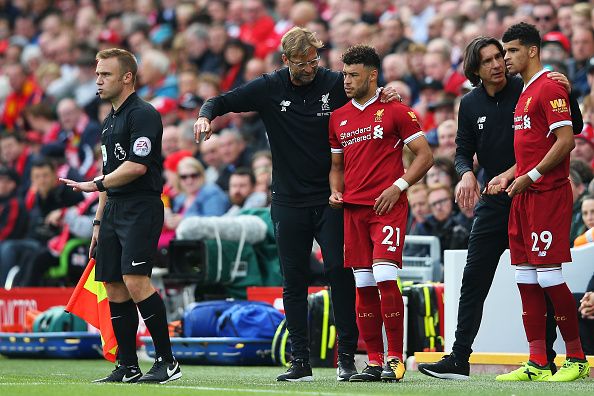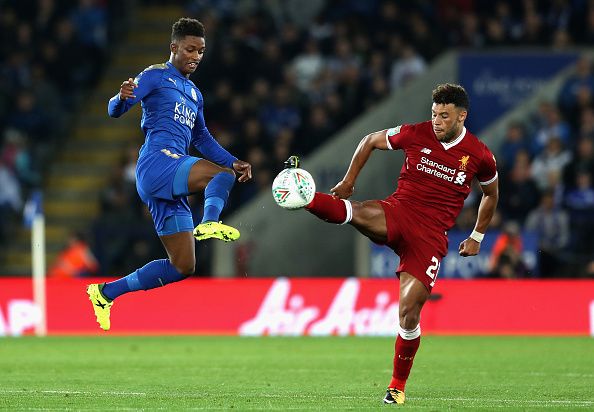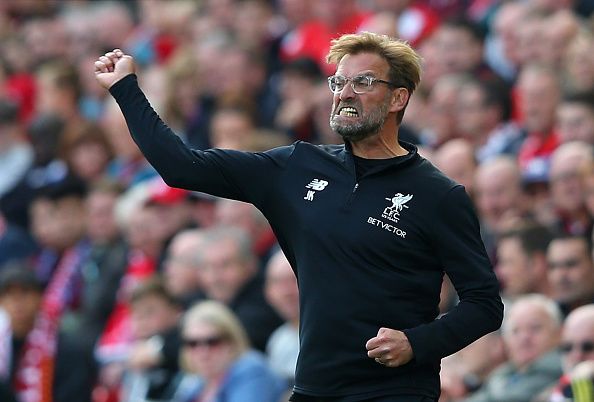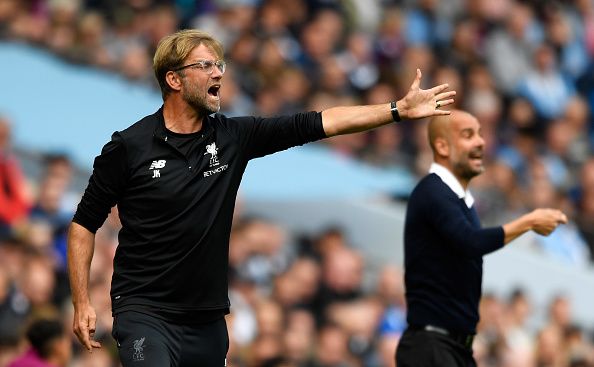Even great managers make bad signings, but this transfer symbolises Klopp’s blind spot.
Back in June, I wrote a story about a transfer rumour linking Liverpool with a move for Alex Oxlade-Chamberlain. The original transfer story claimed Liverpool were preparing a £25m bid for the player, after contract extension talks with Arsenal had stalled. I thought it was nonsense, a story designed to put pressure on Arsenal to hurry up and offer him a better contract. I argued that there was no way Liverpool would pay such a fee, even in an inflated market, for a utility player, who was available on a free transfer next summer.
Oxlade-Chamberlain wasn’t good enough to be a regular starter in any position for Liverpool, and couldn’t get into Arsenal’s midfield ahead of Granit Xhaka and Mohamed Elneny. Why would Liverpool buy a player who would not improve the team? I was wrong. They ended up paying £40m for him. The move made no sense at the time, and makes even less sense after watching his disappointing debut. It could be argued that the transfer also raises questions about Jurgen Klopp’s approach.
Oxlade-Chamberlain was terrible against Leicester in Liverpool’s League Cup loss on Tuesday night. You might say it’s very harsh to judge a player after one start for a club, and it in theory it is. However, Oxlade-Chamberlain has never convinced. The argument that he’s a young player, who will improve with Klopp’s coaching, holds little weight. The winger/central-midfielder/wing-back is 24 and at least one third of the way through his professional career. He’s the same age as Harry Kane and has 29 England caps – potential isn’t a word that can still be used within relation to Oxlade-Chamberlain. This is about as good as it will get.
Maybe Arsenal's business in the transfer window wasn't as bad as everyone thought #OxladeChamberlain #England pic.twitter.com/UIFVOmnbmM
— Robert Redmond (@RobRedmond10) September 4, 2017
The underlying issue with Oxlade-Chamberlain is that he is a gifted athlete playing football, rather than a footballer in the purer sense. There are plenty of players like this in the Premier League. Southampton and Republic of Ireland striker Shane Long is a fantastic athlete with a great attitude, who possesses searing pace. However, on his bad days, he looks like a hurler (an Irish stick-based field sport) who took up football too late.
Ireland might need to rethink their tactics #GEOIRE pic.twitter.com/tCNgCZElSI
— Robert Redmond (@RobRedmond10) September 2, 2017
Theo Walcott is the longest-serving player in Arsenal’s squad, but he’s really just a talented sprinter playing football. Michael Cox wrote an excellent article recently, detailing how Oxlade-Chamberlain’s rugby background influenced his playing style in football. According to Cox, the 24-year-old is:
“…a ball carrier, who storms into spaces after receiving possession… he doesn’t offer genuinely top-class end product; he’s not fundamentally gifted at the basic art of kicking the ball… (he) rarely plays penetrative passes. It’s difficult to remember him providing anything that could be considered a moment of ‘genius,’ or any through balls behind the defence for onrushing teammates…there are few signs he possesses the required intelligence to play in the central midfield.”
Why did Liverpool pay £40m for such a player when other areas of the team needed to be improved?
Oxlade-Chamberlain played his best football, and had his longest stint in the Arsenal first-team, as a wing-back. He turned down a new contract at the Emirates and a move to Chelsea, because he wanted to be a central midfielder for Liverpool, rather than a wing-back for either club. This was entirely his prerogative, it’s his career and he should do what makes him happy.
However, the fact Oxlade-Chamberlain thought he could play in Liverpool’s midfield, ahead of Emre Can, Georginio Wijnaldum, Jordan Henderson, Philippe Coutinho and Adam Lallana, as well Naby Keita next season, arguably shows that he lacks the required decision-making skills to be a top-level central midfielder. If Wenger didn’t select him in Arsenal’s midfield, there was nothing to suggest he could regularly play there for Liverpool, and even less so after Tuesday night.
#OxCam … pic.twitter.com/smCPzNXlyy
— Elliott Simmonds (@elliottsimmonds) September 19, 2017
There’s also an argument that Oxlade-Chamberlain’s transfer has deeper symbolism for Klopp’s Liverpool. Every manager, no matter how good they are, makes bad signings. Sir Alex Ferguson sanctioned a transfer for Bebe, and signed Gabriel Obertan and Michael Owen when he lost Cristiano Ronaldo. But Oxlade-Chamberlain was a strange signing for Klopp because it made no sense when other areas of the team needed addressing and the player didn’t improve the team.
Every manager, no matter how good they are, also has blind spots. Wenger seems to place little emphasis on how the opposition will play, and has persevered with players who long proved unworthy of his loyalty, like Walcott. Ferguson signed several underwhelming goalkeepers over six years, before eventually finding a worthy replacement for Peter Schmeichel in Edwin van der Sar. Klopp’s blind sport is his defence.
Everyone who has watched Liverpool play this season knows they have problems at the back. It was clear during the first game of the season against Watford, when Klopp’s team conceded two goals from set-pieces, it was obvious when they conceded twice from two shots on target against Sevilla and obvious again on Tuesday night against Leicester.
Klopp knows his team has issues at the back, otherwise he wouldn’t have wanted to sign Virgil van Dijk. However, he chooses to ignore the flaws, or is unable to fix them.
Opposition throw in with everyone in position & concede 5 seconds later! Same as Saturday!!
— Jamie Carragher (@Carra23) September 19, 2017
One player alone would not have solved all of their defensive woes, but a good defender would have made some difference, and it would have at least made some sense, unlike the signing of Oxlade-Chamberlain. They weren’t able to sign Van Dijk, but surely there was an alternative option available until they could try sign the Dutch defender again at a later point?
Jonny Evans was available for £30m from West Brom. The defender grew-up supporting Manchester United, and won three league titles for Liverpool’s bitter rivals. However, he’s also a professional footballer, and past loyalties probably wouldn’t have counted for much if a move to Anfield was an option. Evans is better than three of Liverpool’s current central defenders, he’s an experienced player and would have been a good signing for a club who used Ragnar Klavan against Manchester City.
Evans alone, of course, would not have solved all of Liverpool’s defensive issues. However, signing an experienced central-defender, who is better than three of the team’s four central defenders, would have made an awful lot more sense than paying spectacularly over the odds for a winger who wants to be central midfielder, and who doesn’t actually improve the team. Evans, or another central defender, would have been a viable stop-gap solution until the club can try sign Van Dijk again. If not a defender, why didn’t Klopp try sign another midfielder to help protect the defence, instead of Oxlade-Chamberlain?
Klopp chose not to strengthen his defensive options, and, judging by performances so far this season, has done little to improve the defenders already at the club. This suggests that the Liverpool manager has a blind spot when it comes to the other side of the game. The team are set up to attack, with little emphasis on the basic defensive organisation.
According to former Leeds United and Ireland midfielder John Giles, Klopp is a “one-trick pony, with one very good trick.”
“The German has a ‘go, go, go’ approach to football, based on winning the ball and counter-attacking at pace. Liverpool have been brittle in the extreme at the back and have actually been very open to conceding soft goals on the counter and from set-pieces. Klopp does not seem to place a premium on defence and is committed to a press and counter-attack style. The shortcomings in his system have been exposed on numerous occasions…”
It’s difficult to really argue with any of this.
At their best, Liverpool blow teams away. Their attacking trio of Sadio Mane, Roberto Firmino and Mo Salah, are brilliant, and that’s before factoring in Coutinho when he returns to fitness and form. Klopp also isn’t the only top manager in the Premier League whose team appear incapable of basic defending.
He wants his team to play fast, exciting, attacking football, when the easier option is to be defensive and try capitalise on opponent’s mistakes. This is an admirable approach, but the trick is finding the balance between both, as Tottenham Hotspur have managed under Mauricio Pochettino. Two years into the job, such a balance continues to elude Klopp.
The Liverpool manager’s blind spot when it comes to defending is symbolised by Oxlade-Chamberlain’s transfer. Instead of trying to improve the team defensively when the Van Dijk deal collapsed, whether it was through the transfer market or on the training ground, Klopp signed an athletic, attacking player.
The chances of Klopp changing his approach seems about as likely as Oxlade-Chamberlain becoming a top central midfielder.




































